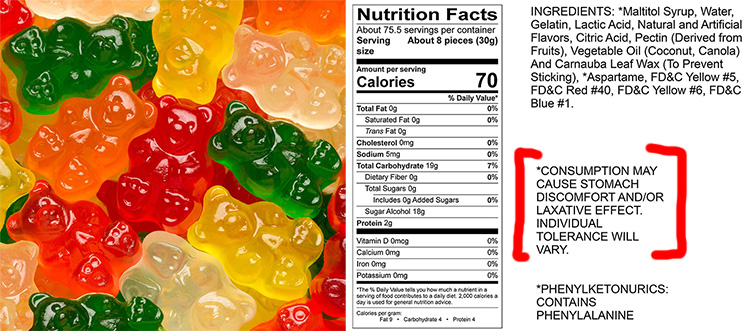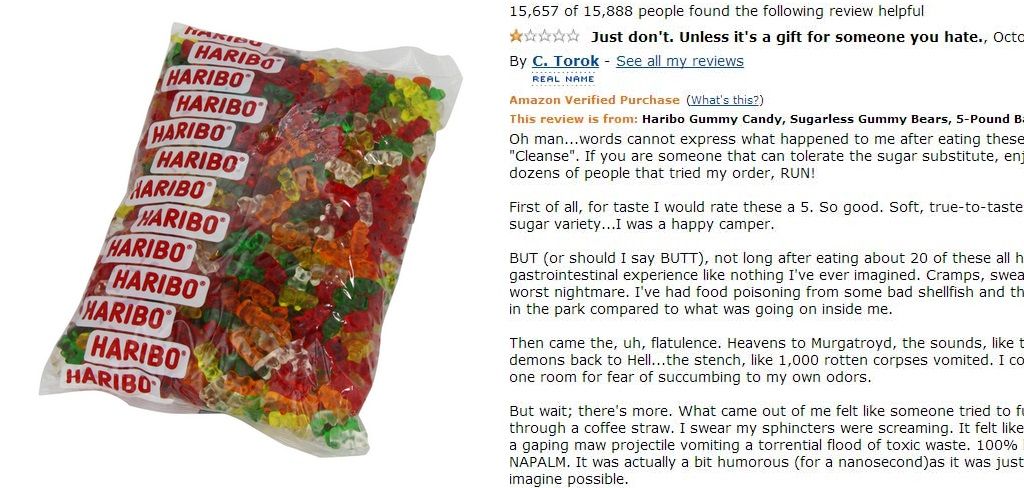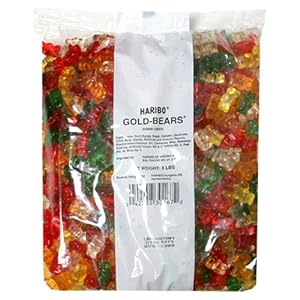When it comes to sugary treats, Haribo has long been a household name. Yet, the advent of their sugar-free gummy bears has ignited a peculiar mix of fascination and horror. Known for their vibrant fruit flavors and chewy texture, these sugarless gummy candies have found a niche among health-conscious consumers eager to indulge without the calories. However, the product also carries a notorious reputation stemming from some comically disastrous user experiences, particularly documented on platforms like Amazon.

sugar free gummy bears haribo amazon
The Rise of Sugar-Free Treats: A Health Trend
As awareness of dietary health grows, so does the popularity of alternatives like sugar-free candies. Renowned health and wellness expert, Dr. Michael Greger, emphasizes the necessity for balance in modern diets, stating, “Choosing low-calorie snacks can be beneficial; however, one must be wary of the ingredients used, such as artificial sweeteners.”

sugar free gummy bears haribo amazon
Haribo’s sugar-free gummy bears offer a tempting option for those wanting to reduce sugar intake—a crucial concern for many, especially individuals managing diabetes or adhering to ketogenic diets. Sweeteners like maltitol are a staple in these products, providing the sweetness without the calories of regular sugar.

sugar free gummy bears haribo amazon
The Bitter Side: Customer Reactions and Reviews
While these treats promise a guilt-free indulgence, customer feedback tells a drastically different story. Among the most shared experiences are reviews that recount extreme gastrointestinal distress, often resulting from the consumption of just a handful of Haribo sugar-free gummy bears. One review famously states, “It took absolutely no effort to expel this demon,” highlighting the unexpected and explosively humorous consequences of overindulgence.
A Lesson in Moderation: The Warning Signs
Nutritionists, including registered dietitian Keri Glassman, advise moderation even when indulging in seemingly healthier alternatives. “It’s paramount to read labels and understand the effects of sugar substitutes. Eating too many gummy bears—sugar-filled or not—can lead to counterproductive outcomes,” she notes. Consumers are often unaware that products containing maltitol can lead to discomfort and digestive issues, especially when consumed in excess.
Social Media Buzz and Memes
The infamous reputation of these gummy bears has transcended mere customer reviews to become a cultural phenomenon, generating memes and viral videos across platforms such as TikTok and Reddit. Posts often showcase humorous takes on the aftermath of eating these sugar-free treats, playing on the dramatic and exaggerated experiences shared by users. This blend of comedy and caution brings light to an otherwise serious health message—laughter may indeed be the best medicine, as long as it follows a sensible approach to snacking.
Balancing Indulgence with Health
For those looking to enjoy gummy bears without the sugar, striking a balance is crucial. Health advocates recommend pairing sweets with other nutrient-dense foods, suggesting that a small number of sugar-free gummy bears might be enjoyed alongside a serving of fruit or a protein-rich snack to mitigate any gastrointestinal effects. As Dr. Rachael L. Johnson, a nutritionist, says, “Combining treats with wholesome foods not only eases digestion but also fosters more sustainable eating habits.”
Expert Opinions on Sugar-Free Candies
Notably, the debate surrounding sugar substitutes is ongoing. Some experts, like Dr. Barbara Rolls, a renowned nutritionist, caution against consuming excessive artificial sweeteners. “While they seem like a great alternative, many individuals might experience adverse effects, and it’s crucial to consume them mindfully,” she warns. This is a sentiment echoed in many consumer reports found on platforms like Amazon, where reviewers share their personal encounters, further propelling the conversation regarding these products.
What Are the Main Ingredients?
Curious about what goes into these sugar-free gummy bears? The primary sweetener is maltitol, a sugar alcohol that can indeed cause digestive issues when consumed in sizable amounts. Most sugar-free products also include additional ingredients like gelatin and citric acid to provide that characteristic gummy texture and tart flavor.
Conclusion: A Sweet Dilemma
The saga of Haribo’s sugar-free gummy bears serves as a stark reminder of the importance of ingredient consciousness. As consumers, we are responsible for understanding the foods we choose to indulge in and their potential effects on our health. Balance becomes a key theme here—not just in dietary choices but in the enjoyment of life’s sweeter moments. In the end, these gummy bears can coexist with a healthy lifestyle, albeit with a dash of caution and a good dose of awareness.
FAQs about Haribo Sugar-Free Gummy Bears
- Did they discontinue Haribo sugar-free gummy bears?
Though sometimes misconstrued, Haribo still offers a line of sugar-free gummy bears, however, buyers should always check for current availability. - What is the sweetener in Haribo sugar-free gummy bears?
The primary sweetener used is maltitol, a sugar alcohol known to cause gastrointestinal distress in some. - Do sugar-free gummy bears contain carbs?
Yes, they do contain carbohydrates, and while they are lower in sugar, moderation is still key for those monitoring carbohydrate intake. - Are Haribo sugar-free gummy bears suitable for a ketogenic diet?
They are often regarded as keto-friendly; however, individuals should always read labels and account for potential digestive effects.